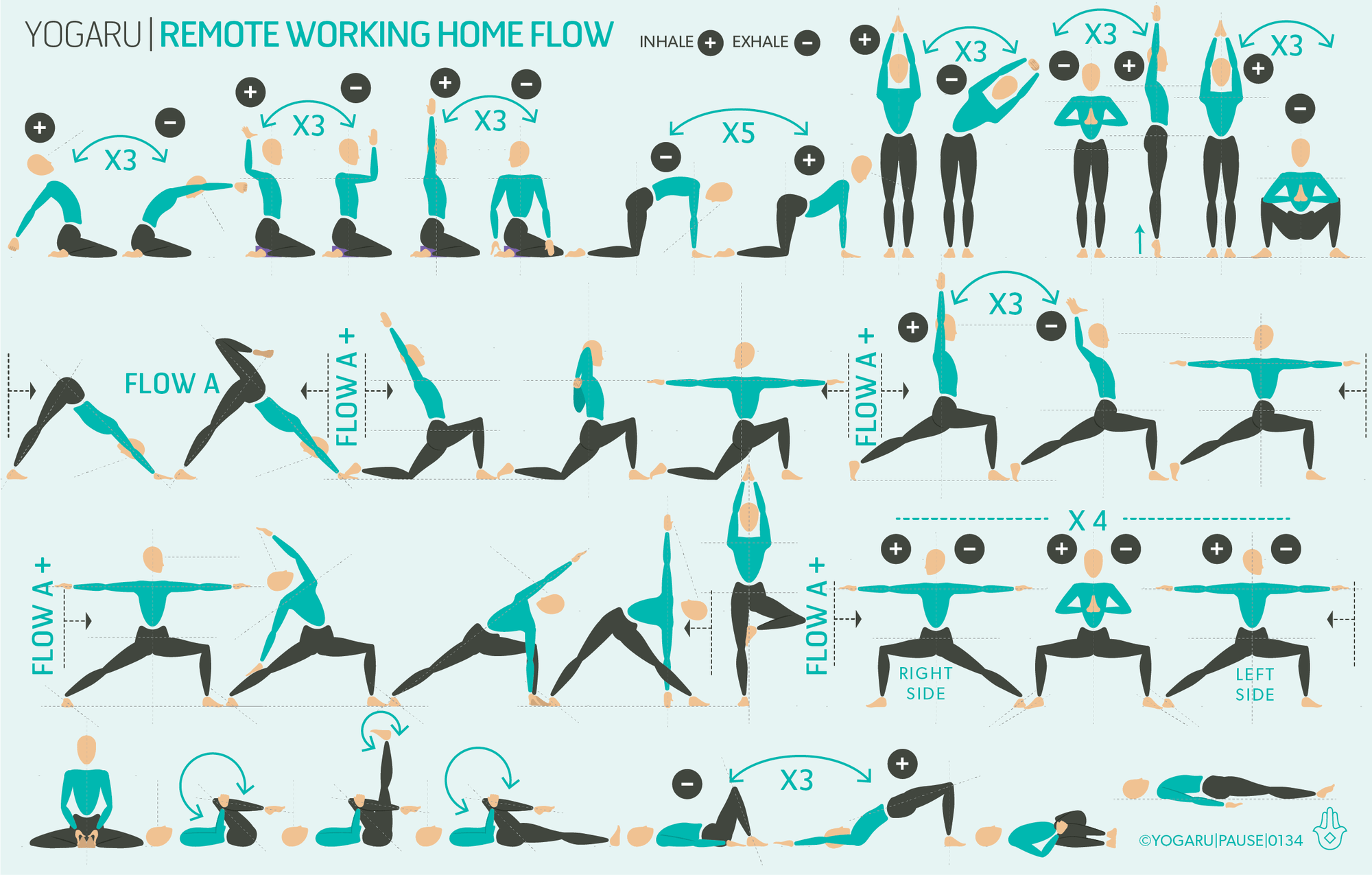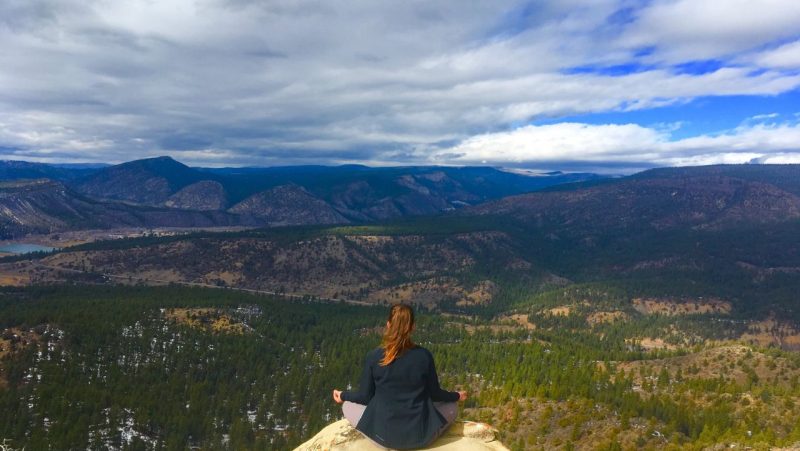
Remote working yoga flow
A simple yoga flow for all those working from home. By Ruth Delahunty
Many of us have experienced working from home during the past year or so. Unless you were already set up with a home office, you may be working from a less than ideal space which adds extra challenges to sitting for long periods of time.
Kitchen tables were not designed for hours of working on a computer. If, like me, your table is too high you will end up with your shoulders very hunched and wrist strain. You might be sitting on a kitchen chair which most likely is not giving your back the support it needs. Over the course of the day you will start to feel progressively tighter and achy in the hips, shoulders, neck and lower back.
A little bit of stretching during or after your working day can make all the difference.
What is good sitting posture?
We know that prolonged periods of sitting can compromise our posture, spinal health and overall wellbeing. Taking breaks from sitting and ensuring your seated posture is good will help. You might be limited by your workspace on some of the recommendations, but have a read of the list below and see what you can improve on throughout your working day:
Rest your feet on the floor or if your chair is too high place a prop under your feet.
Have your knees at the same height or slightly lower than your hips.
Avoid crossing your legs or ankles to allow good blood flow through the legs.
Shoulders release away from your ears.
Lengthen through the spine to the tip of your crown.
Keep your back against the chair with a natural curve in your lower back.
Distribute your body weight evenly into both hips.
Height of your table should give you a natural L’ shape in your arms.
Height of your computer screen should be eye level.
Take a standing break every hour of sitting.
Stretch your gaze at something in the distance during your standing break.
Why yoga?
With remote working, we are all inclined to work longer hours and often into the evenings. While you may feel you are getting lots of work done, you will also most likely find when you finally hit the bed exhausted that your mind is processing away all the information and hasn’t had a chance to switch off. This leads to a disturbed night’s sleep, tiredness, poor focus and another day of working late. Sound familiar?
Stepping away from your work and focusing on your wellness is completely acceptable. Especially in the current climate when we are all being encouraged to get plenty of fresh air and look after our mental health to counteract the unprecedented period in time we are living through.
Yoga has many benefits, many of which are listed below with a guide to which pose will help the most. With regards to its benefits for remote working, yoga stretches and strengthens muscles that have been weakened by sitting, realigns the spine, improves posture, builds focus and concentration, eases headaches, insomnia, fatigue, stress tension and anxiety, increases circulation and boosts the immune system.
Exploring remote working home flow in your practice
Remote working makes doing yoga from home even more accessible. Yoga is one of the easiest movement-based practices to slot into your day, all you need is a mat. This sequence focuses on simple poses to gently undo all the stiffness from long hours sitting. No need to change into yoga gear, just take a break during your working day, roll out your mat and get started. You can break the sequence up throughout your day to keep moving or do the full sequences in one practice. Alternatively, get into your comfy clothes and use this as your ‘switch-off time’ at the end of your day to ease out any aches and pain in your hips, shoulders and neck, and realign your spine.
The first row of the sequence can be practiced at your desk, seated and standing, as a mini-stretch break or on your mat to start the sequence off. A yoga mat is advised for the following two rows of standing poses to give you some grip. Socks off is always better to let the sticky mat do its job. The final row can be done either on your mat, lying on a blanket or whatever you find comfy. This last line can also be practiced just before bedtime to get the spine and hips ready for a prolonged period of rest and restoring as you sleep. If you would like to practice for a bit longer you could also add in some Sun Salutation Cs just after the first row of poses and before each mini flow. Mini flows are the group of three to four poses between the arrowed lines. So, for example, add a Sun Salutation C before the two lunge mini flow on the second row and before the two warrior flows on the third row. You can also add in more side stretches and twists in any of the standing poses. They are very beneficial for spinal health and are great for getting the circulation going again.
Alignment cues
As always, move nice and slow as you practice this sequence. Concentrate on any stiff areas you may have from sitting. There are a few two-pose flows which will help you connect your breath with the movement. You will see a ‘+’ for the inhale and a ‘-’ for the exhale to help you establish a nice smooth breath for the suggested rounds. There is no particular peak pose in this sequence.
Below are some further tips and additional alignment cues for you to try as you practice:
Practice the first six poses throughout the day at your desk.
Take hourly breaks where you stand up and do one or two of the standing mini flows from row one.
Pause in a few poses and breath in for the count of four out for the count of six.
Add a side stretch when you come to low lunge and again when you come to high lunge.
If you are looking for a shorter practice, leave out one of the lunge flows and the warrior flows.








